
Want a Water-Wise Home? How One San Francisco Family Made a Lasting Change
Inspired by conscientious homeowners and innovative design ideas, find out some solutions for smarter, more sustainable water use.
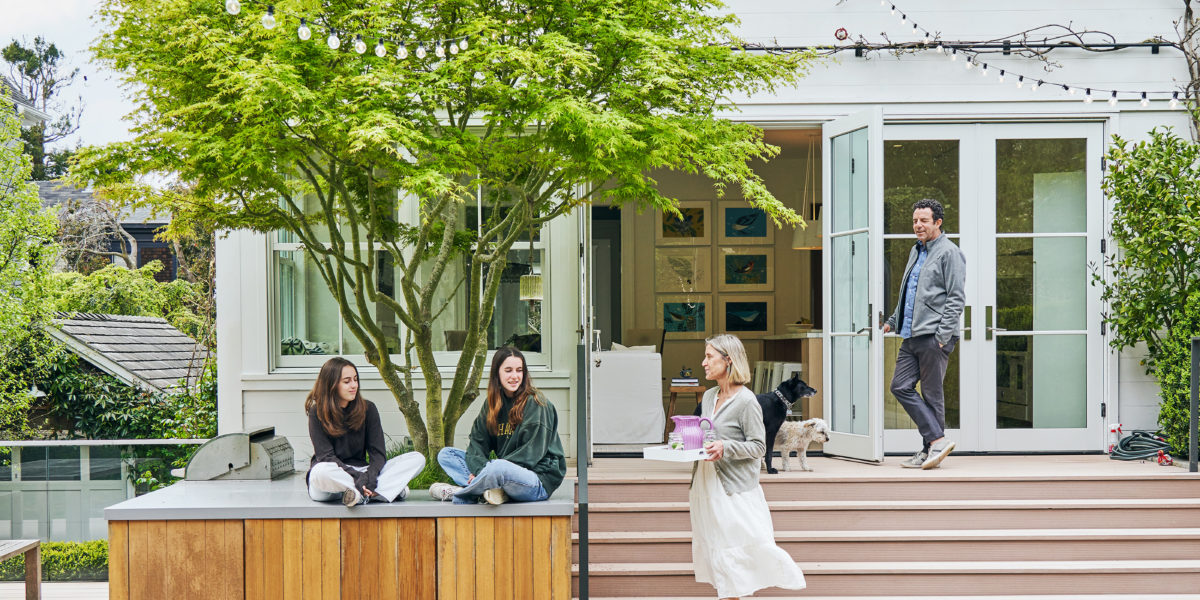
Thomas J. Story
Jonathan Feldman and Lisa Lougee felt a little sheepish about their lush lawn, which is spread out in a verdant carpet of meadow grass across the wide lot surrounding their 1911 Edwardian in the Richmond neighborhood of San Francisco. They’d invested years in the planning and building of their family house, which involved a lengthy renovation that opened up the back of the house with expansive windows, and created easy access to the large garden—a rarity in town—from two levels.
“When we saw the house, we fell in love with the façade, and it had some really beautiful interior trim,” says Feldman, an architect and principal of Feldman Architecture. “But the key opportunity and challenge was that it was on this great lot which was covered in weeds with a few fruit trees. And there was no access. To get to the rear yard, you had to go through the front door and walk around through the weeds to the back.”
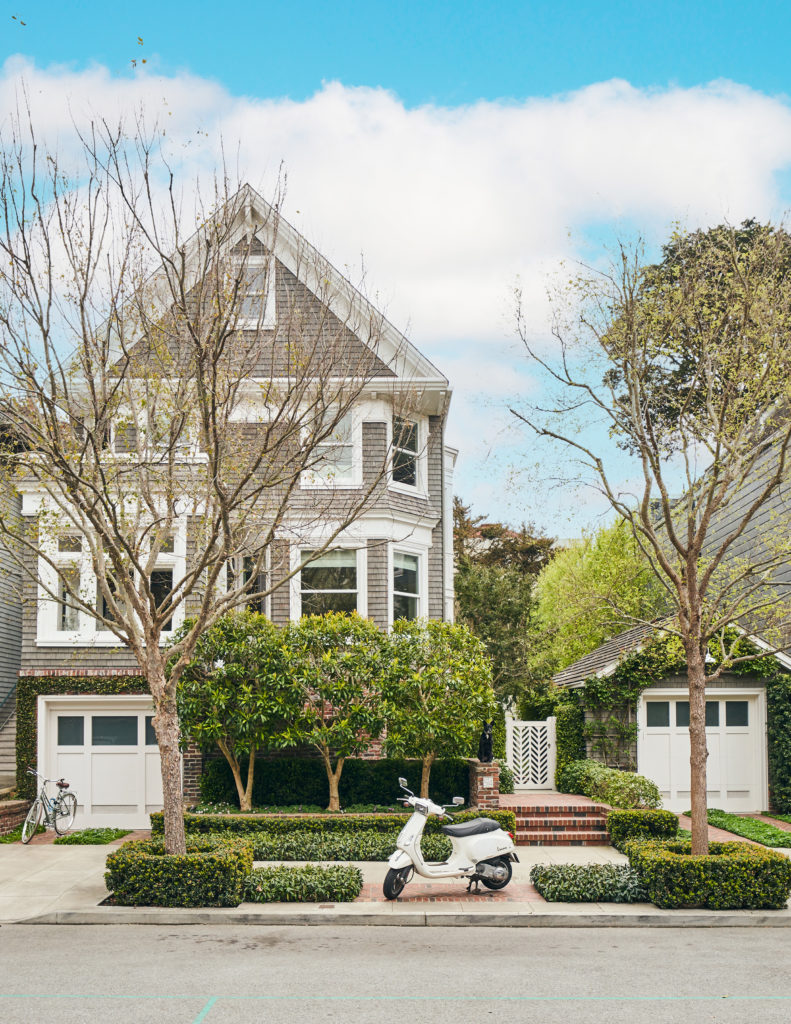
Thomas J. Story
The effort to transform that unloved patch of dirt into what it is today was massive. Earth was moved. Concrete walls were poured. And the house and yard were manipulated to make sure the garden would be appreciated through doors and windows that open on three sides of the house. Lougee, who is an interior designer, used light oak floors, soft gray paint, and pale blue grass cloth to brighten the house, which is situated in a persistently foggy, “light starved” section of town. The design also solidified Feldman and Lougee’s commitment to sustainability, earning LEED Platinum certification for its energy efficiency, material integrity, and the elaborate system for water collection, filtration, and reuse.
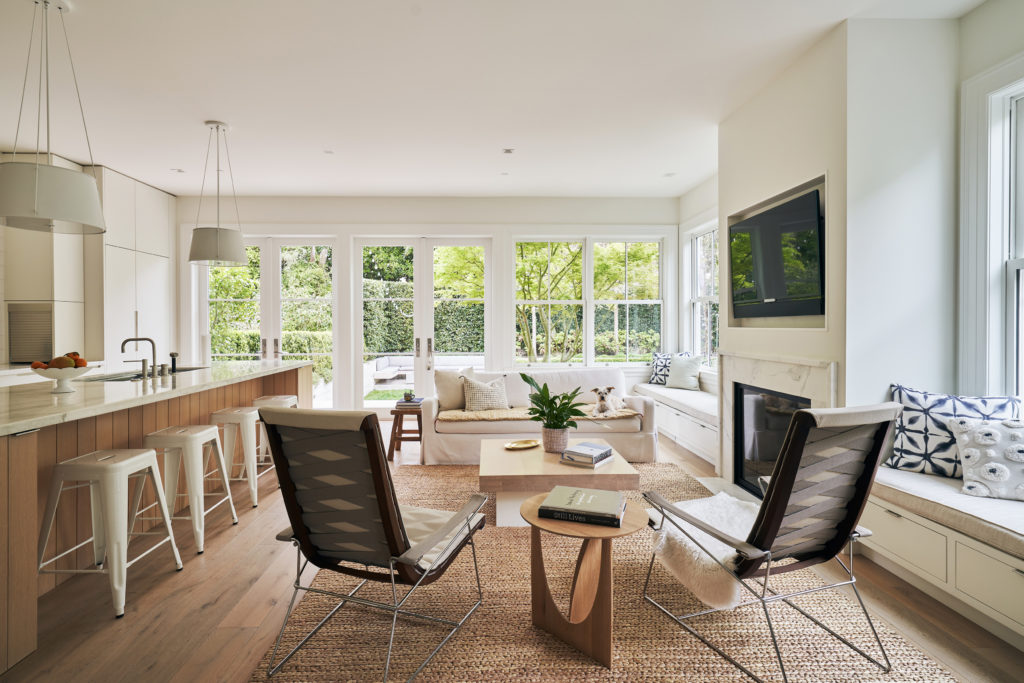
Windows on two sides and a garden view give the kitchen and family room a “porch-like” quality, a rarity in the light-starved Richmond district. Armchairs, B&B Italia.
Thomas J. Story
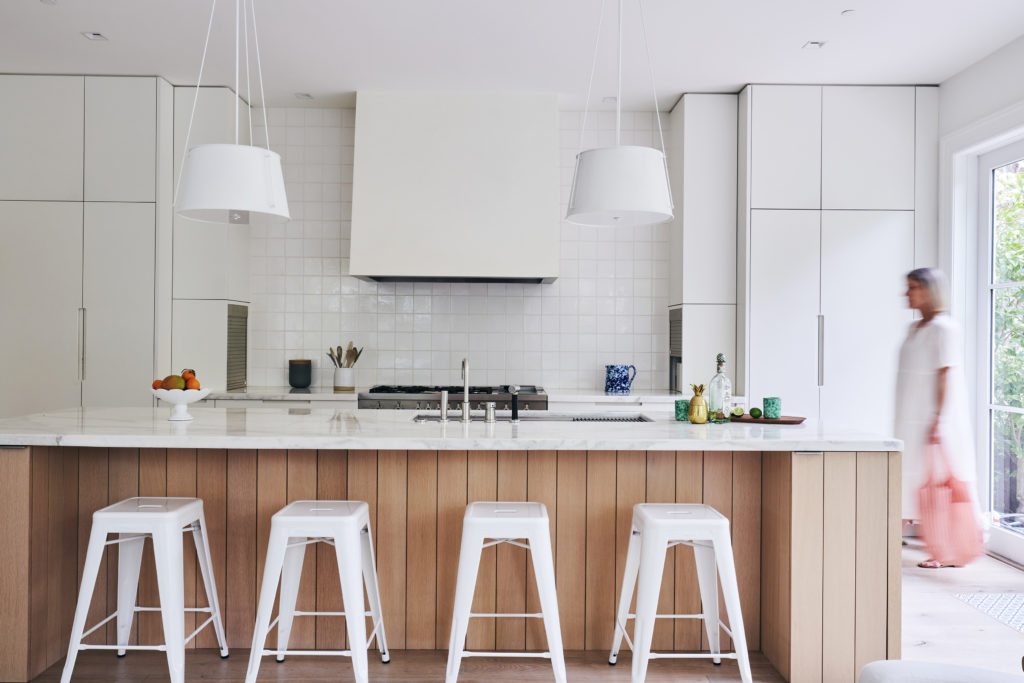
Lougee kept the palette simple to avoid competing with details like moldings and built-ins. Counter stools, Tolix. Custom lacquer cabinets. Square Zellige tile; similar styles cletile.com
Thomas J. Story
“We moved in during a serious drought year in 2017,” he says. “Our neighbors were letting their lawns go brown to conserve water, and there we were surrounded by all of this green. We felt we had to explain, so we put up a little sign saying, “Recycled Water: Ask Me How.”
While the last couple of years have delivered a lengthy list of distractions deflecting attention away from the water crisis across the West, a persistent three-year drought has been quietly, relentlessly shrinking our water supply.
Further complicating matters, the water infrastructure across the United States is inefficient, and the services it provides are inaccurately priced. Our water is scarce, but it’s also artificially cheap. Water utilities are about 90% publicly owned, heavily regulated and subsidized, and come in so many shapes and sizes that “not many of them have the capacity to perfectly capture the cost of service at all times,” says Newsha Ajami, a water expert and chief strategy officer for research at Lawrence Berkeley Lab who studied water use patterns at Stanford. Much of the infrastructure that supplied water to our communities was built many years ago, and hasn’t been updated. There are leaks, evaporation, and waste.
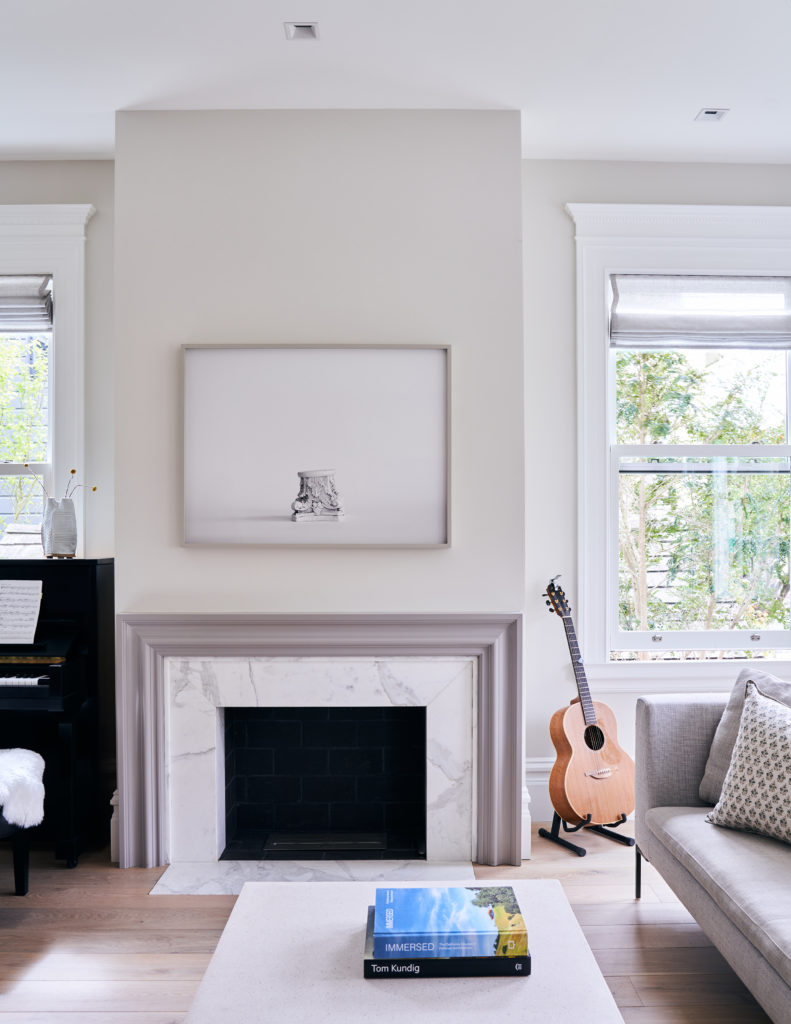
Thomas J. Story
“We are paying for the service. We aren’t paying for the environmental impact,” says Ajami. “It’s short-term thinking, I would say. It’s hard for water utilities to think about how much they have to raise their rates. We pay a lot more for energy than we do for water and the reality is that water is much more essential to survival. The challenge with undervaluing water is that we don’t end up investing as much in the system. It cuts into the maintenance, and it’s difficult to maintain a top-notch work force.”
Because there isn’t as much money to be made in innovative water reuse and recycling systems, the business of making rainwater capture and gray water systems hasn’t flourished like the solar energy sector has. So the old systems, and the old habits, remain. When you think of the energy, effort, and expense invested in supplying clean, safe drinking water to the millions of people who live in a region with little rain and shrinking snow caps, the idea of dumping it on grass and funneling pristine water through a toilet seems exceptionally shortsighted.
So conservationists like Feldman, who designs water-wise houses up and down the West Coast, have to experiment with their own solutions, sometimes installing giant, 40,000-gallon capacity rainwater tanks to contain rain that falls in intense, brief storms, all at once, to use during lengthy dry seasons.
Behind the Feldman home, underneath the deck where the family gathers to enjoy peaceful days in the oasis they’ve created, including a row of river birch trees that cast dappled shadows throughout the house, are storage tanks that capture rainwater that’s piped to the drip irrigation. Alongside those is a state-of-the-art filtration system that recycles water captured from sinks, tubs, showers, and the washing machine—called gray water—and sends it through a separate set of pipes to flush toilets and water the lawn with what’s remaining. Installing it involved a double set of plumbing pipes to channel the water in the appropriate direction, and a lengthy wrestling match with the city. Many explanations and inspections were required to prove that the home’s recycled water was safe and contained to the property, meaning that it wouldn’t be entering the municipal supply.
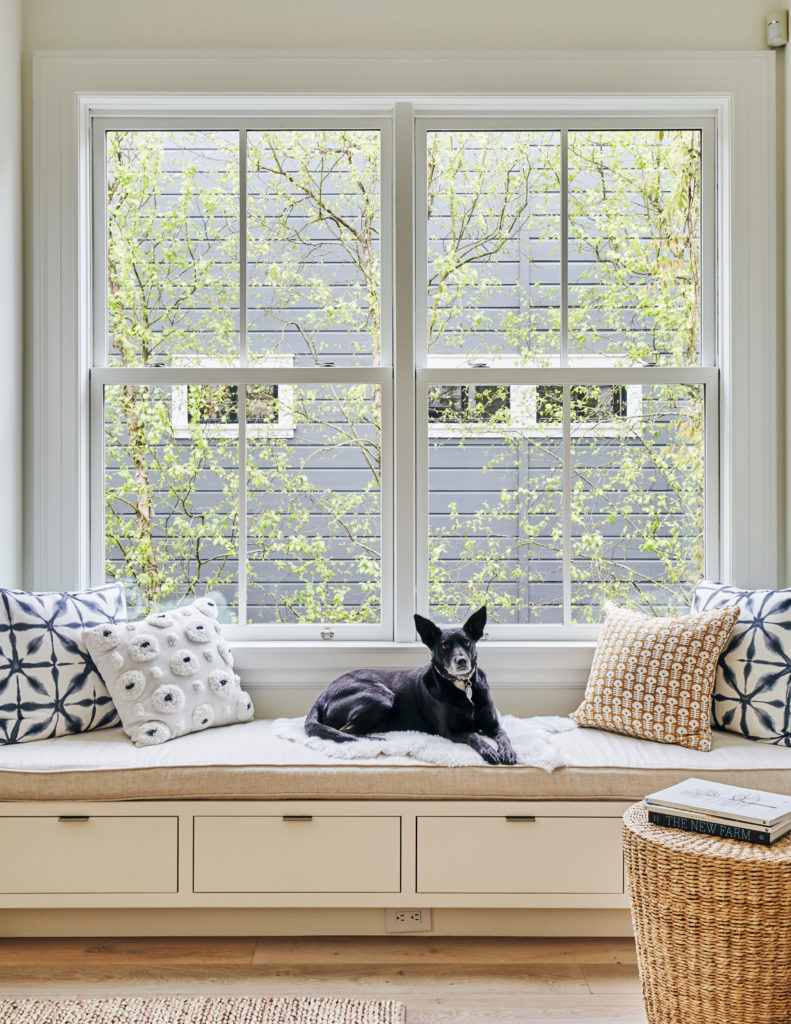
Trainor was the ideal collaborator, selecting trees like these river birches to grab and dapple the sunlight. This thirsty species only works here because of reused water.
Thomas J. Story
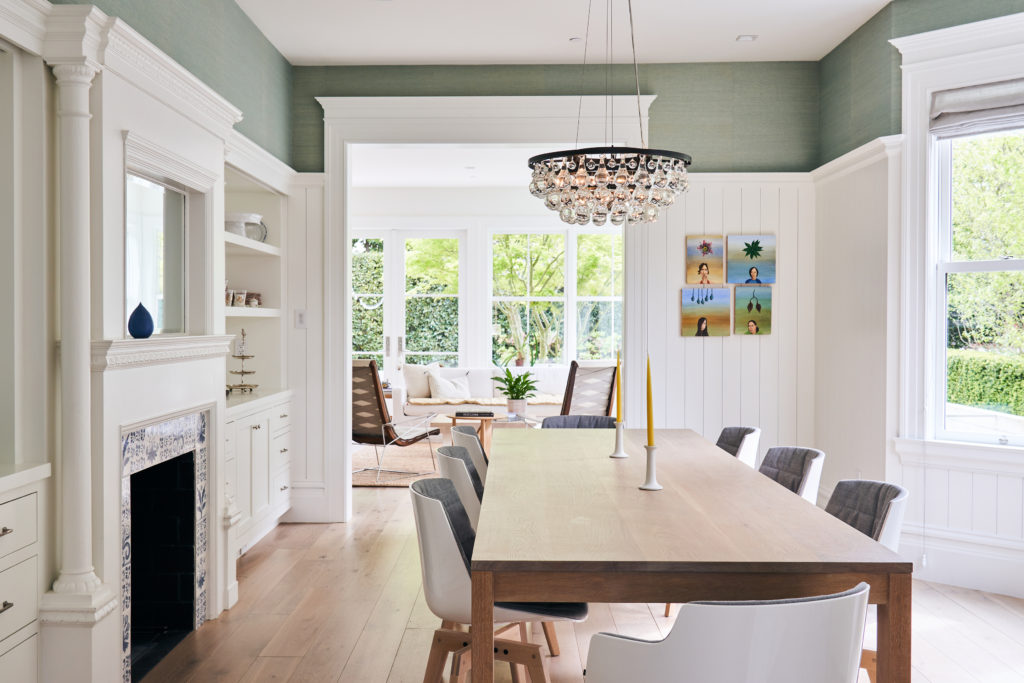
Lougee balanced her traditional tastes (Bergere chairs, grasscloth wallpaper) and her husband’s modern style (wide plank floors, MDF Italia dining chairs). Pendant light by Ochre.
Thomas J. Story
“It was a series of back and forth, and back and forth, and twisting arms and getting people to sign off on the plans,” says Feldman. “It’s easy to use rainwater in the landscape. It’s harder to use gray water. That takes jumping through special hoops. The building health inspectors have concerns and requirements, making sure it doesn’t get back into the municipal water, or get in a place where someone would interact with it in a way that might be dangerous. Then we wanted to use all that water back in the house to flush our toilets as well. That’s one step more difficult than just irrigation.”
When asked if he got it right the first time, he’s quick to reply. “We absolutely did not,” he says. “It worked, but there were a lot of challenges with the gray water component. We had to amend it and add new filtration devices and remove others. It was really good for me as an architect to experience that. It’s easy for us to fall in love with what the brochure says and what the promise is.”
The upshot is that these systems can be finicky. And while the brochures Feldman mentions make it look easy, there is always trial and error. For example, if the filters are not working correctly, there can be an odor to the water, and it can possibly kill the plants. Feldman had to install some water-monitoring software to keep an eye on the system to make sure it was all working correctly.
“You can always shut it off and [the smell] goes away, but you have to be there to notice it, be hands on. That’s why we don’t recommend this system for vacation homes,” he says. “If you’re not there taking showers every day, it doesn’t really pencil out.”
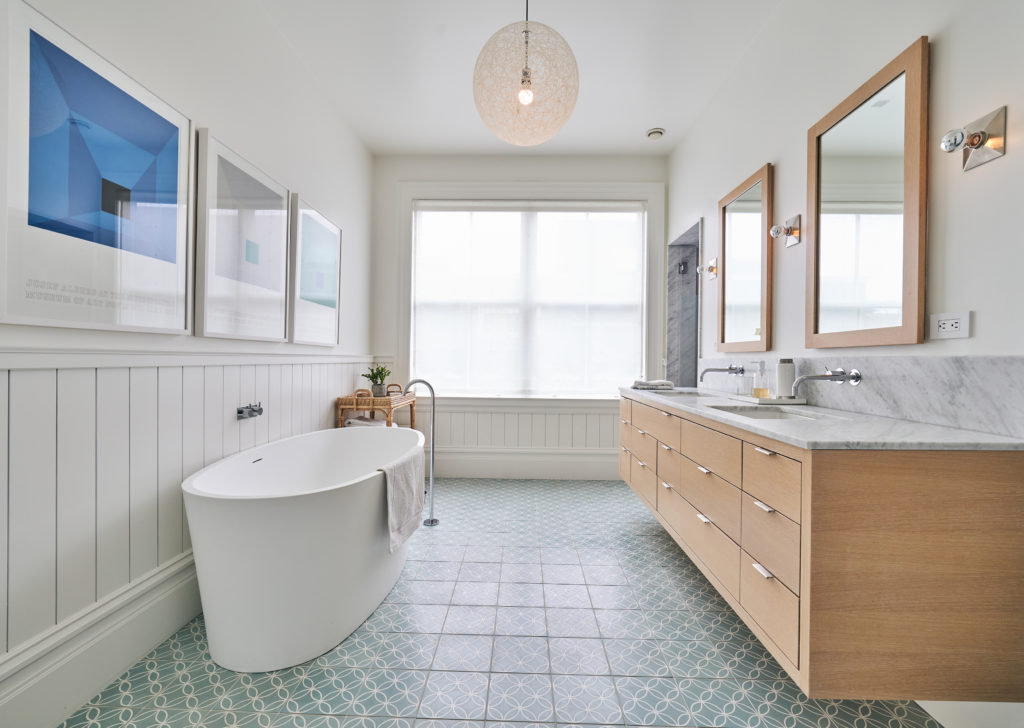
Waterworks tile, Blu Bathworks tub, and prints from an Albers exhibit.
Thomas J. Story
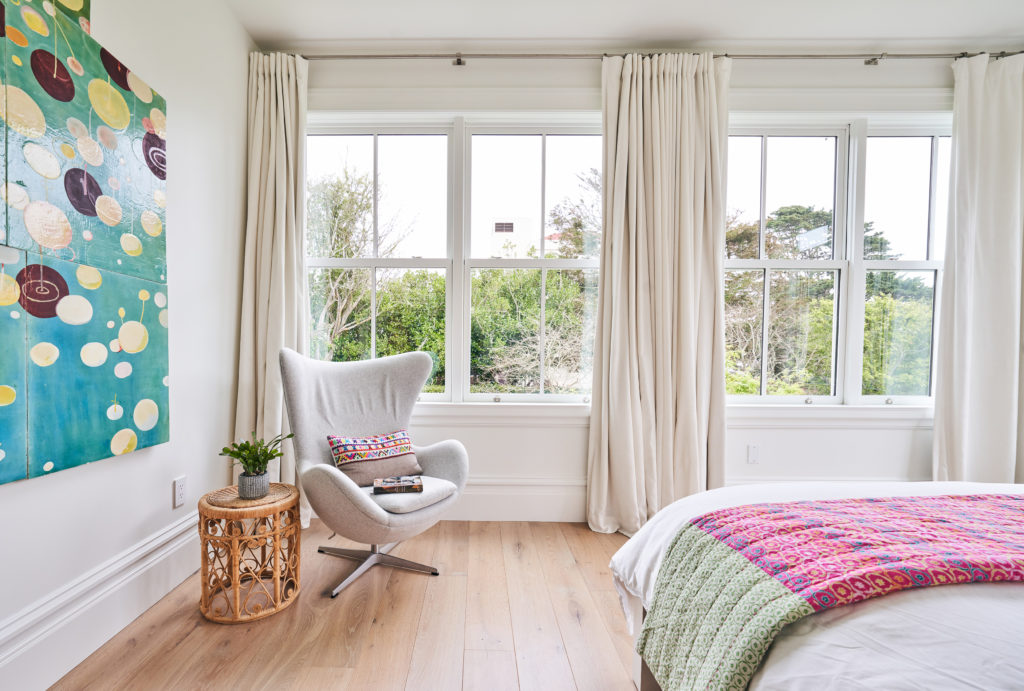
Thomas J. Story
But the payoff for the effort in residential spaces is abundantly clear.
“The rooms at the back of the house feel like a porch,” Lougee says. “Our primary bedroom has windows that wrap around two sides and open to this incredible view of the garden—turning the corner and walking in to see it flooded with light, especially in spring when it’s so vibrant.”
“At first, when Jonathan and I were discussing the plans for a gray water system, I was probably like ‘How much is this going to cost? And will it affect the kind of couch I want to buy?’” she jokes. “But when we find ourselves in these horrible droughts, and our garden has been able to stay quite lush, I’m glad we did it. It’s worth it.”
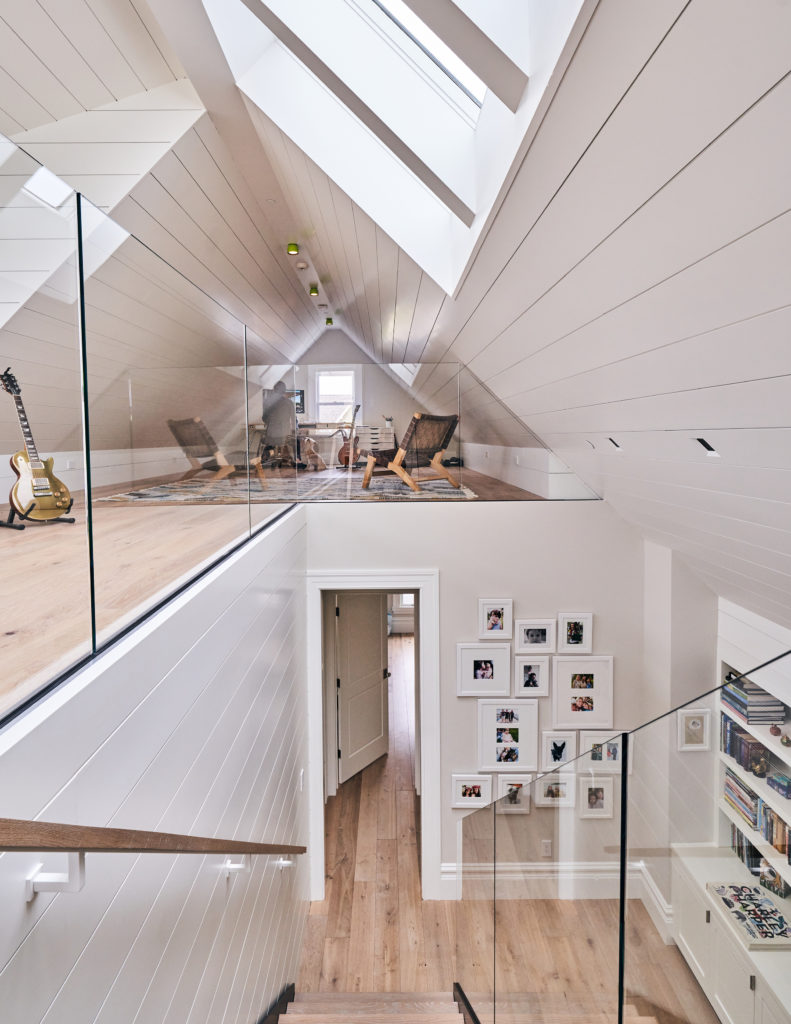
An attic office is accessed by a blackened steel staircase. The glass guard rail allows for sun from the skylights to illuminate the second floor
Thomas J. Story
